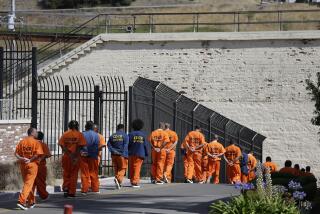Deterrent Effect of 3-Strikes Law
- Share via
Re “3-Strikes Law Called No Deterrent,” Nov. 9:
Law professor Franklin Zimring should look up the word “deterrent.” He says the three-strikes law has deterred few, if any, criminals. Yet the article indicates almost 50,000 felons have been incarcerated under the aforesaid law. That’s my kind of deterrence.
ANTHONY J. DI MILO
Northridge
*
As a career prosecutor, I have questioned hundreds of individuals concerning their understanding of the California three-strikes law. Criminal defendants and other lay people (along with many attorneys) have one thing in common: They don’t have a clue as to how the law operates. Virtually every person I have ever discussed this law with believes that any felony constitutes a strike. The overwhelming majority of felonies committed in California are not strikes. Likewise, the vast majority of convicted felons in this state are not subject to the three-strikes law, even though they often believe that they are.
Zimring’s study appears to hinge exclusively on the behavior of criminals who are actually subject to the three-strikes law. He ignores the deterrent effect of the law on those who have yet to commit a felony. Moreover, if convicted felons who are not subject to the law are deterred from committing new crimes by their ignorance, then Zimring’s conclusion is unsound.
During the first four years since three strikes’ inception, California has experienced a 30.8% drop in serious felonies (almost double the national average). If three strikes is responsible for only a percentage of this drop, it is difficult to argue that this law is not having an impact.
GORDON AUCHINCLOSS
Santa Barbara
More to Read
Sign up for Essential California
The most important California stories and recommendations in your inbox every morning.
You may occasionally receive promotional content from the Los Angeles Times.













